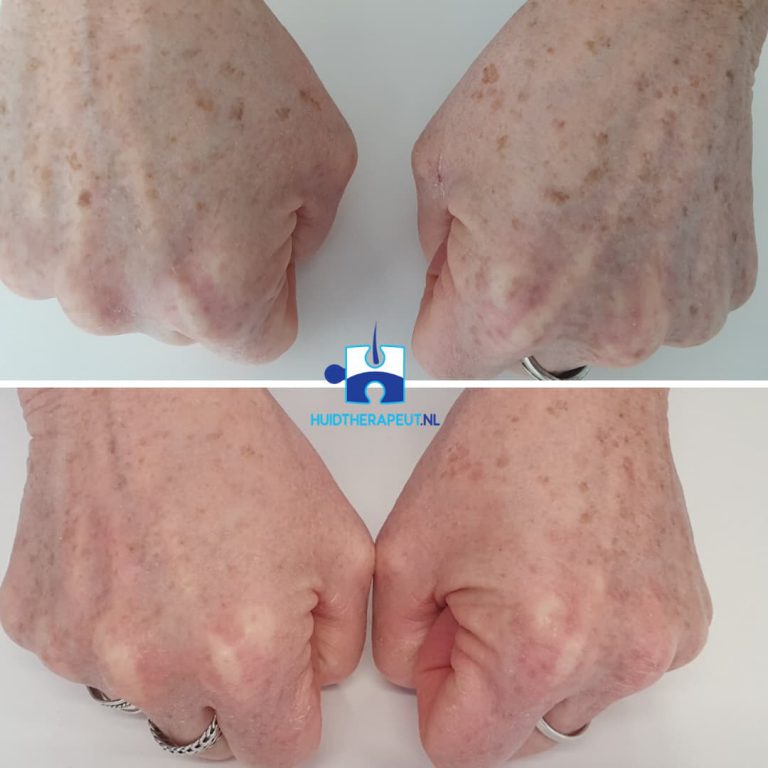An age spot, also known as Lentigo or liver spot, is a very common and benign brown to black colored skin defect that occurs in middle-aged people. The spots often have a diameter of a few millimeters to 2-3 cm.
The age spot, mainly occurs in the following locations:
- the face
- backs of the hands
- cleavage
- forearms
The lentigo solaris mainly occurs in people with a light skin type who have been unprotected in the sun. Normally the spots do not go away on their own. However, people often notice that, for example, in winter (when there is less sun) the spots light up a bit. When the weather turns summer, the spots often darken again. The lentigos do not normally cause any complaints such as itching or pain. If this is the case, it is advisable to have the doctor assess the spot.
In some cases, a lentigo can develop malignantly (skin cancer). In that case, the shape and color of the spots will become more irregular. Treatment is then necessary. So go to the doctor if a spot changes in size or color or if it gives symptoms such as itching, pain and / or bleeding.
How can you treat age spots?
The skin therapist can treat benign age spots by means of coagulation therapy (CryoPen) or pigment laser treatment.
When there are many small lentigos, chemical peels could also achieve a nice effect.
In addition to the treatment methods mentioned above, it is important to apply sun protection every day. This often prevents new spots from appearing and / or existing spots from darkening. It is therefore recommended that you apply a daily factor of at least 30 to the face and further sun-exposed areas.
Especially when working with one of the above treatment methods, sun protection is indispensable because the skin becomes temporarily more sensitive to sunlight.




